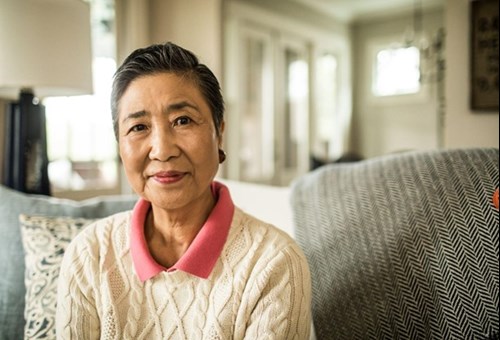Home visits help identify health risks before they become severe, preventing expensive adverse events and facilitating holistic condition management across care settings for better cost and quality outcomes.

While it’s no secret preventive measures are essential to keeping people healthy, many seniors wait for their annual doctor visits to gain updates on their health status. For individuals with chronic conditions like diabetes, preventive and diagnostic services provided in the comfort and convenience of home can help fill the gap between office visits and serve as a hub for the continuum of care.
Nearly 30 percent of adults in the United States over the age of 65 have diabetes, and many more are at risk. Our over-reliance on facility-bound prevention has exacerbated how much we spend on diabetes as a nation, with $1 out of every $7 spent on health care going to treat diabetes and diabetes-related conditions like blindness, kidney and cardiovascular diseases, stroke, and amputations.
Home visits help identify health risks before they become severe, preventing expensive adverse events and facilitating holistic condition management across care settings for better cost and quality outcomes. And according to a Signify Health Harris poll conducted in late 2020, 61 percent of U.S. seniors are interested in receiving health care services in their home, with 65 percent expressing willingness to participate in an in-home health assessment that includes diagnostic and preventive services.
Every day, in every county and state across the country, Signify Health licensed clinicians visit Medicare Advantage plan members to conduct comprehensive in-home health evaluations (IHEs). They often perform diagnostic services, including the Hemoglobin A1c test and diabetic eye exams. These screenings are essential for diabetes management and can provide critical insight into the effectiveness of members’ current treatment plans.
Beyond the necessary diagnostic and preventive screenings, our clinicians monitor members’ medication adherence, check their health status, and spend time answering any questions they may have about their conditions. For people living with diabetes, these in-home services can be critical. As many as 60 percent of people with elevated HbA1c levels, for example, are not adherent to their treatment plan. The information gathered during an IHE can inform care team decisions that prevent adverse health events and reduce costly emergency and critical care services.
If we want to improve diabetes outcomes for seniors, the home should be an essential part of their care continuum. Home is where we can be proactive about prevention, re-engage seniors with their health, have the most transparency into their everyday lives and routines–and where we can best support their annual doctor visits. Learn more about closing gaps in diabetes management with preventive and diagnostic services.
About the author
 Meghan Sinclair is vice president, product - diagnostic and preventive services at Signify Health and manages strategy and development of the company's diagnostics and preventive services. Prior to joining Signify, Sinclair was a product and operations executive at 100Plus, a health technology start-up (acquired by Connect America) that provides remote patient monitoring services for medical practitioners and patients. Previously, she served as a product leader at Amazon Lab126 working on emerging products and Alexa devices. Sinclair started her career in the Coast Guard leading technical program management and engineering teams in support of US marine safety missions. She's passionate about creating new products and services by identifying customer needs, developing trust, and driving results through cross-functional teams. She holds an MBA from UC Berkeley Haas, and MEng in mechanical engineering from UC Berkeley and a BS in mechanical engineering from the Coast Guard Academy.
Meghan Sinclair is vice president, product - diagnostic and preventive services at Signify Health and manages strategy and development of the company's diagnostics and preventive services. Prior to joining Signify, Sinclair was a product and operations executive at 100Plus, a health technology start-up (acquired by Connect America) that provides remote patient monitoring services for medical practitioners and patients. Previously, she served as a product leader at Amazon Lab126 working on emerging products and Alexa devices. Sinclair started her career in the Coast Guard leading technical program management and engineering teams in support of US marine safety missions. She's passionate about creating new products and services by identifying customer needs, developing trust, and driving results through cross-functional teams. She holds an MBA from UC Berkeley Haas, and MEng in mechanical engineering from UC Berkeley and a BS in mechanical engineering from the Coast Guard Academy.
